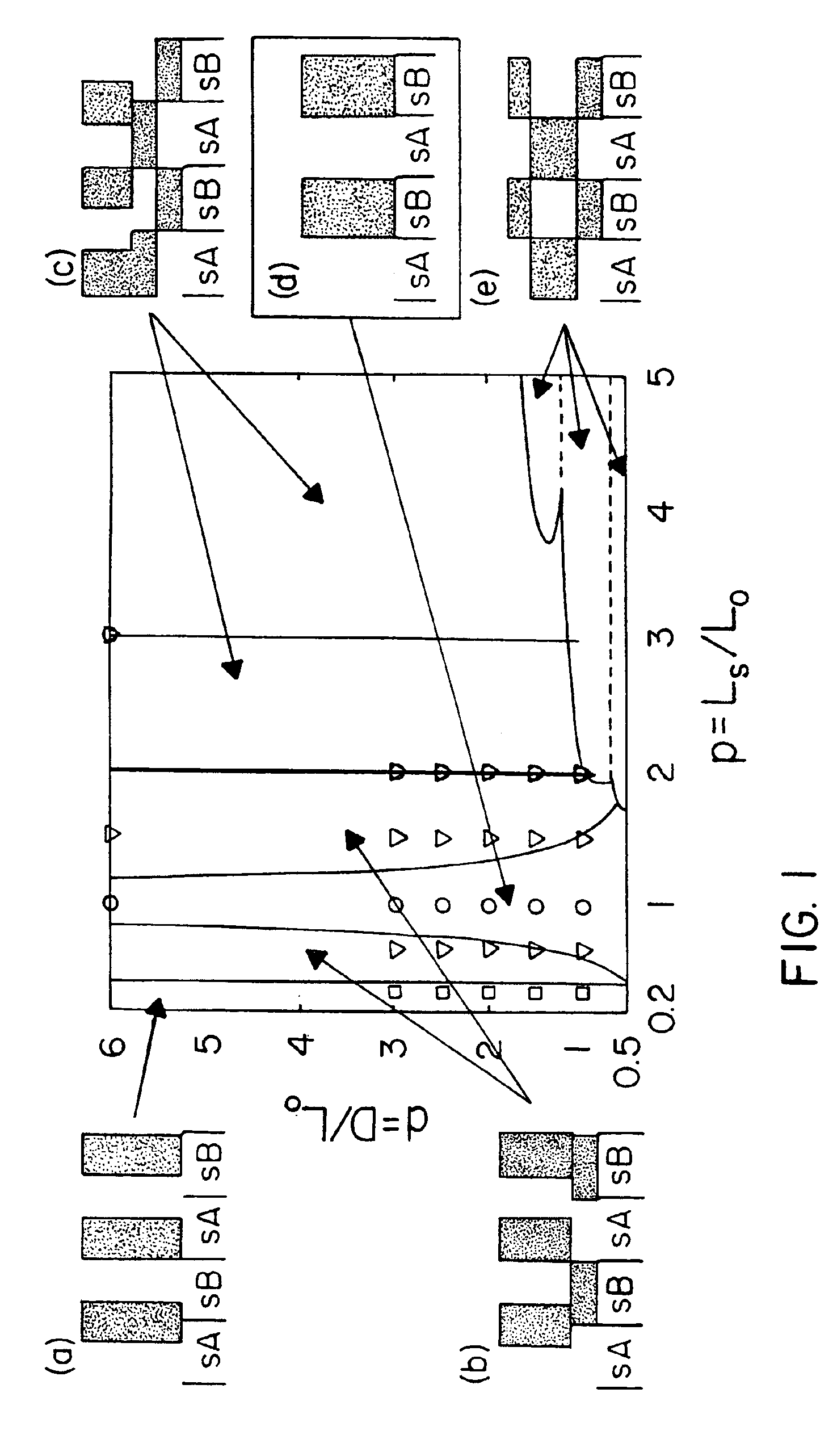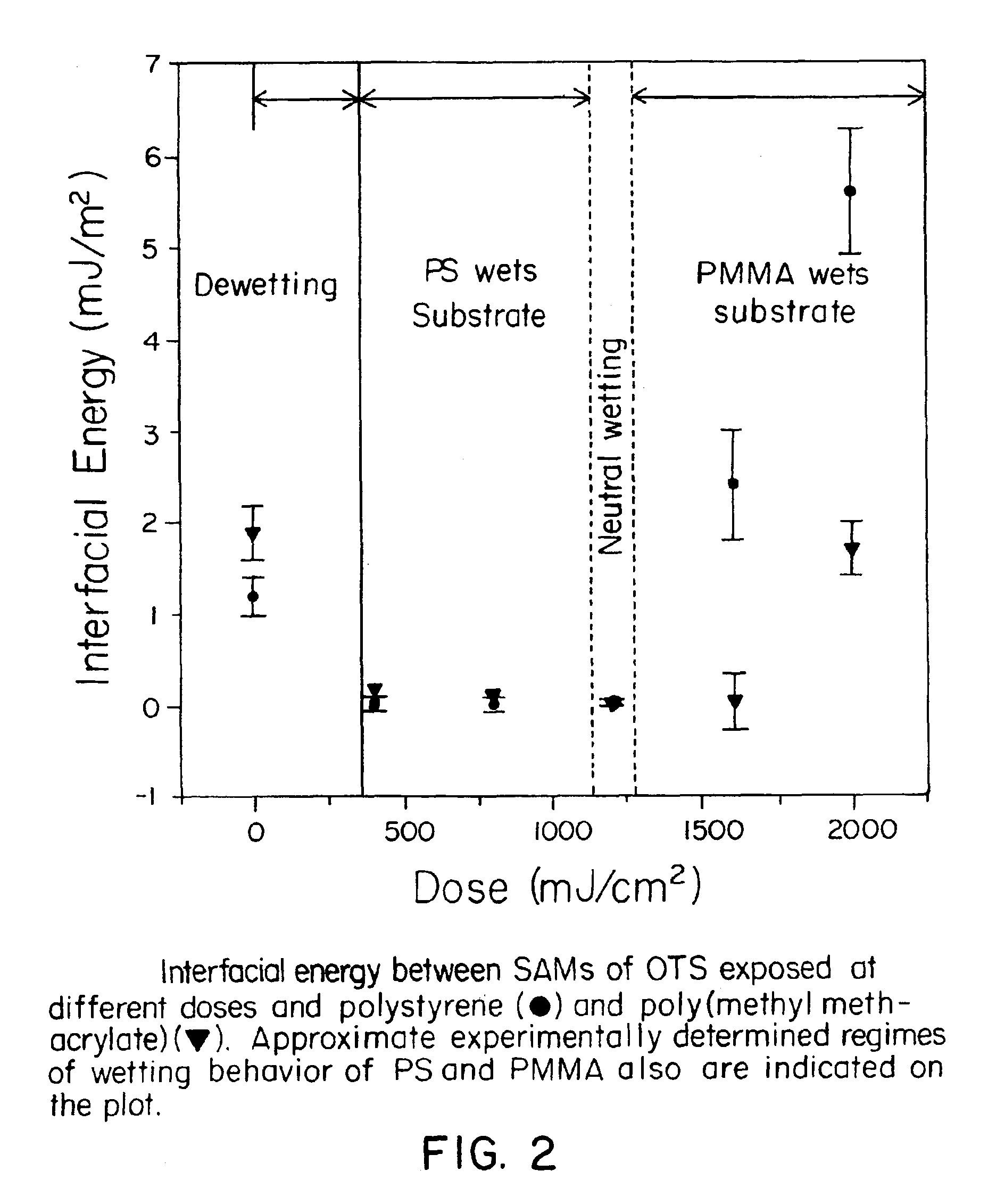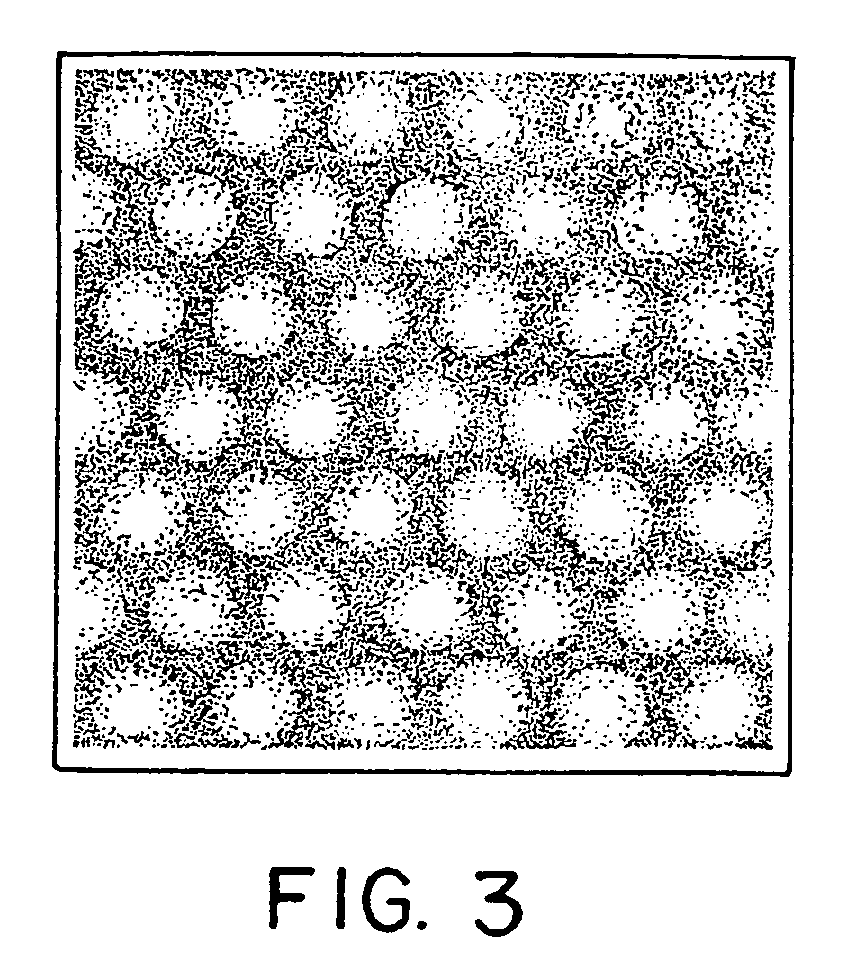Guided self-assembly of block copolymer films on interferometrically nanopatterned substrates
a technology of block copolymer and substrate, which is applied in the direction of photomechanical treatment, paper/cardboard containers, photosensitive materials, etc., can solve the problems of non-trivial optimization of photo-resist processing, inability to strictly control dimensions or roughness, and significant challenges encountered in the fabrication of nanostructures. achieve the effect of higher or lower wettability
- Summary
- Abstract
- Description
- Claims
- Application Information
AI Technical Summary
Benefits of technology
Problems solved by technology
Method used
Image
Examples
Embodiment Construction
[0023]In the present invention, thin films of block copolymer are self-assembled to produce structures that may be used, e.g., as templates for nanofabrication under appropriately controlled conditions. Processing conditions are preferably utilized that induce perpendicular orientation of the microphase separated domains and amplification of the surface patterns that are lithographically formed on a substrate. The following discusses the factors that influence the preferred processing conditions.
[0024]The free energy of symmetric diblock copolymer films confined between homogeneous and patterned surfaces is assumed to consist of four contributions: (1) the elastic free energy associated with chain stretching, (2) the block-block interfacial energy, (3) the surface-block interfacial energy, and (4) the free energy of bending if the lamellae were not flat. The equilibrium film morphology was determined from proposed structures with the minimum total free energy, and is found to be pri...
PUM
| Property | Measurement | Unit |
|---|---|---|
| Thickness | aaaaa | aaaaa |
| Nanoscale particle size | aaaaa | aaaaa |
Abstract
Description
Claims
Application Information
 Login to View More
Login to View More - R&D
- Intellectual Property
- Life Sciences
- Materials
- Tech Scout
- Unparalleled Data Quality
- Higher Quality Content
- 60% Fewer Hallucinations
Browse by: Latest US Patents, China's latest patents, Technical Efficacy Thesaurus, Application Domain, Technology Topic, Popular Technical Reports.
© 2025 PatSnap. All rights reserved.Legal|Privacy policy|Modern Slavery Act Transparency Statement|Sitemap|About US| Contact US: help@patsnap.com



